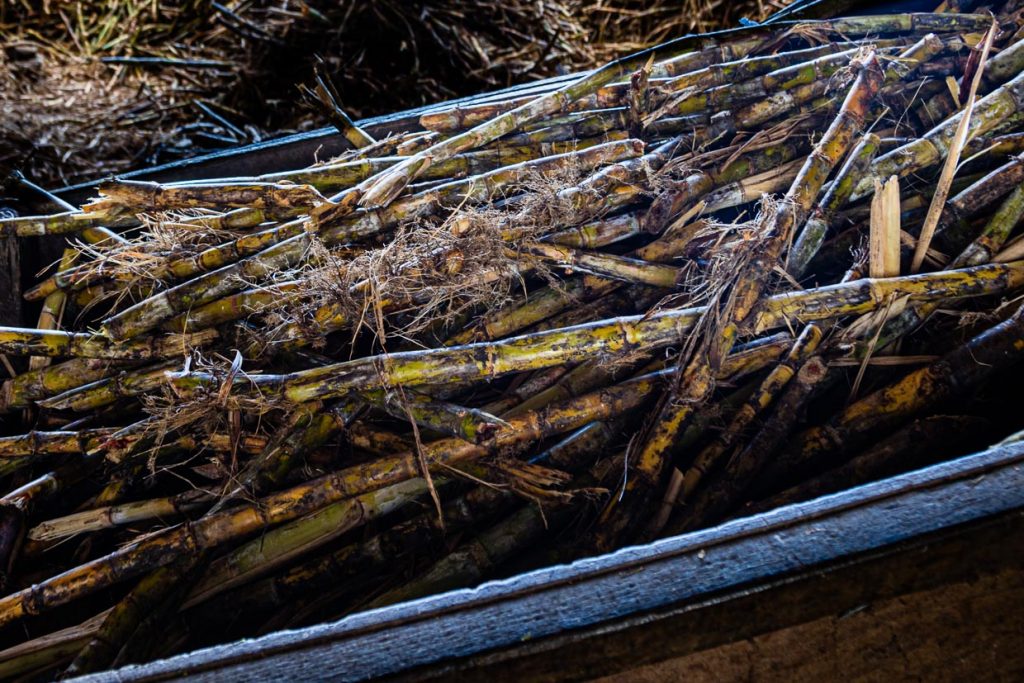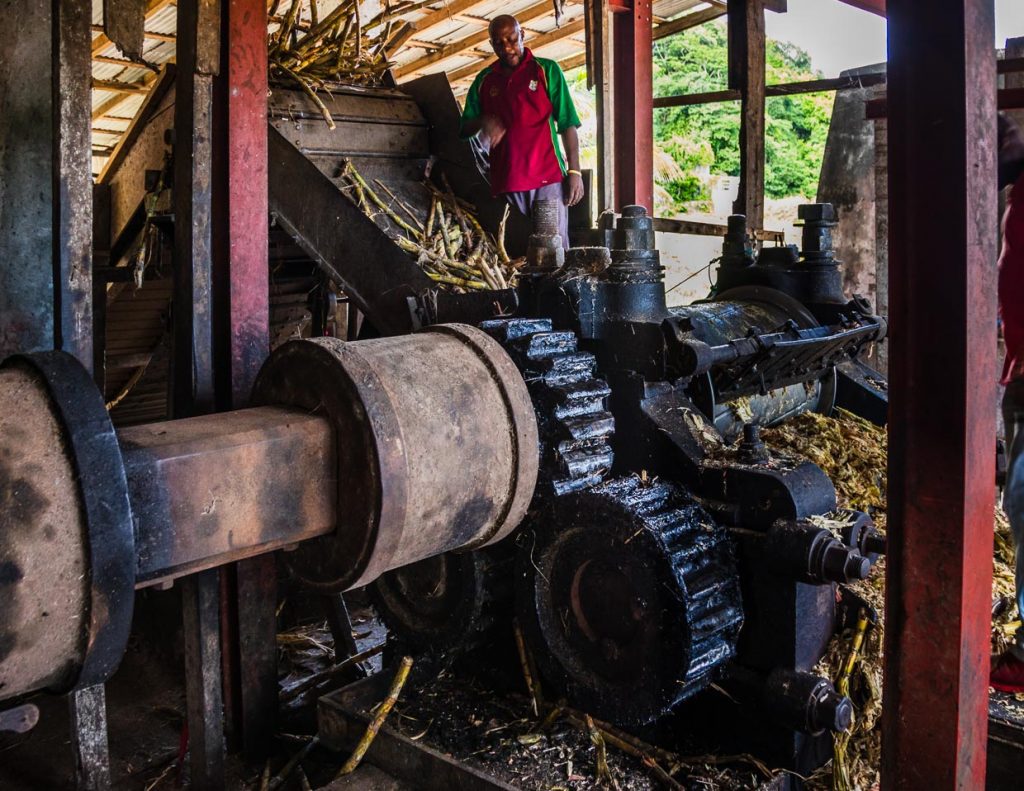Mozart had not yet composed The Magic Flute and the industrial revolution was just taking off, but the water wheel in northern Grenada was already turning and continues to do so today. For more than 235 years, the power of the Antoine River has been pressing the sweet juice from Caribbean sugar cane, from which, in the course of a traditional process, the organic rum is created that can only be found on the Caribbean island of Grenada.


Good things look even better old
This manufactory is not only old. It looks almost dilapidated and has many places that have only been repaired in a makeshift fashion. But it has been in operation longer than anywhere else, and that is a source of pride for the entire workforce. To keep everything running smoothly, each employee has to perform several functions, one of which is especially important: firefighting training. This is urgently needed because open fires are burning in many places. And it is very close to the containers in which the substance is produced, which is not allowed as luggage on airplanes because of its fire hazard.

The Antoine Rivers Distillery on Grenada may not be the oldest rum factory according to the documents. On the neighboring Caribbean island of Barbados, Mount Gay rum has probably been produced since 1703. But the Antoine Rivers Manufactory is legendary and looks just as old as it is. It is certainly the oldest where you can witness the manufacturing process as it was established at the time.

Every day, workers heave sugar cane onto the conveyor belt, which, like the press, is driven by the water wheel manufactured in England almost 300 years ago. The construction works reliably and has proven its durability for 235 years. Several men supervise the pressing process, during which some sugar cane is pressed through the roller, even several times.

In the dry season, the sugar cane in Grenada is more concentrated. However, the press then also has a lower output because the mill wheel is only driven with less water. So both factors balance each other out, and it is up to the talent of those responsible to achieve the usual quality through processing. The squeezed sugar syrup flows through an open channel into a hall where it is further processed.

Behind the pressing plant, a huge mountain of pressed stalks (the bagasse) piles up, which are dried in the sun and used as fuel to heat and thicken the sugar solution containing molasses. By-products, after all, have their uses and need not be considered waste. There is also something organic about the processes here.

Old-fashioned: all 80 jobs are safe
At the Antoine Rivers Rum Manufactory, 80 employees have been producing 500 bottles of rum a day for years, satisfying only the demand of the island of Grenada with its population of just over 100,000.

It’s good for the workforce and the brand that there are no plans to increase production. After all, modernization would entail a huge reduction in staff. The company, it has been calculated, would manage with only eleven employees. But could the rum then still be as legendary as its history?

Craftsmanship animates the rum spirit
The juice pressed from the sugar cane is scooped back and forth between several copper bowls with huge spoons until it is concentrated enough for fermentation. Under the coppers, a fire generates the necessary heat from the dried bagasse.


At the Antoine Rivers Manufacture, no yeast is added to the brew, as it continues with the culture that has been native to the building for centuries. After eight days of fermentation in large concrete tanks, the sugar and molasses are converted to alcohol and the typical rum aromas.

After the fermentation is complete, the alcoholic liquid enters large copper flasks that are heated over a wood fire. Because of the greater heat required, a fire made of sugar cane residue (bagasse) is no longer sufficient.
At the beginning of the distillation process, unwanted methanol evaporates and is discharged with a loud hiss when its boiling temperature is reached. The following phases are collected in several intercooling steps until finally the 75 percent white rum collects in the last collecting vessel.

As in every country, customs in Grenada keep precise records of the amount of alcohol produced. All bottles are finally filled manually from a small refrigerated filling container and labeled by hand. In the sensory tasting, the 75 percent overproof rum was particularly convincing; it has a very round finish and is surprisingly much milder than the rum diluted with water to 69 percent.


